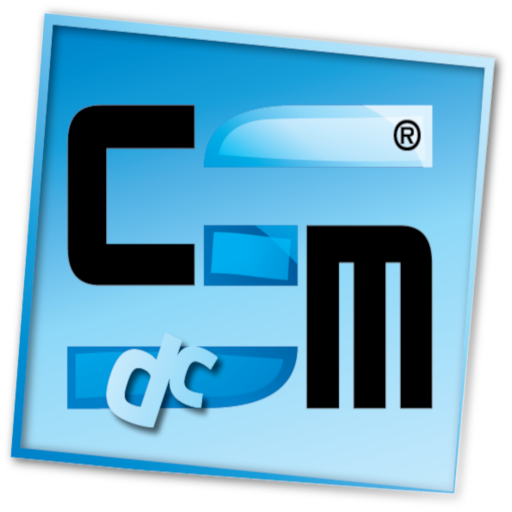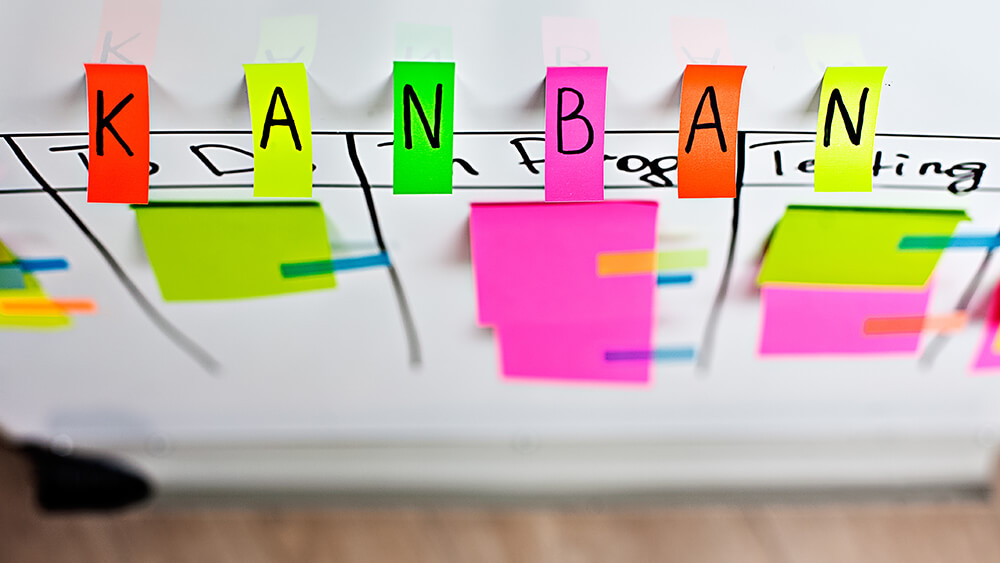How Kanban works?
Kanban is a framework of visualization of the flow of work in order to balance demand with available capacity and spot bottleneck. It follows some simple rules, such as: work should be visualized, work-in-progress should be limited while work should be pulled, instead pushed. It makes also process policies explicit and clear and improve collaboratively, as per Kaizen. Because Kanban is a pull system.
It is based on its 4 principles:
• Start with what you do now;
• Agree to pursue incremental, evolutionary change;
• Respect the current process, roles, responsibilities, and titles;
• Encourage acts of leadership at all levels.
If you practice Scrum or you already know something about it, Scrum teams commit to the sprint goal, described with bundle of stories, work on them for 2 to 3 weeks and complete the Sprint, and again plan for new Sprint goal described with another bunch of stories. In Kanban there is no commit goal described with stories, for iteration or time box or sprint. It is a bit different.
Cycle time is one of the key metric for Kanban teams. Cycle time is the duration of time a story/work unit takes to travel through the team’s workflow – from the moment work starts to the moment it finished. By optimizing cycle time and improving efficiency, the team can confidently forecast the delivery of work.
Key principle of Kanban is to limit the amount of work in progress. Work in progress limits helps visualize bottlenecks. Although Kanban has specialized teams, despite cross-functional Scrum’s, they all help each other when bottleneck appeared. They unitedly jump into resolving the road blocks to get the flow enabled. That’s why Kanban is complement with Continuous Delivery, sharing same the focus on just-in-time delivery. It is not mandatory to have Continuous Delivery, but it is ultimately goal for sure.
Let’s imagine like this – if you have your Kanban Board with tasks pulled from the Backlog, in each of your columns, which can be divided according to your teams, you can add only number of cards up to the team members number, minus one. It will be Work-In-Progress. So, if your development team has 4 members, number of tasks can be up to 3 at once. This is one of rare limitations in Kanban, commitment is based on capacities.
What types of Kanban exist?
Kanban grew and developed with time, so nowadays it is implemented in different environments. Its evolution branched into several different types of Kanban. In manufacturing, at the beginning there were 2 of them, and now there are 6 types. Here are them and the way of their work:
• Withdrawal Kanban – here “move cards” are used to signal when a part is ready to move from one part of the production process to another. The card is attached to a prescribed number of parts, which are moved to the work area that requires them. Once the parts are used, the card is returned as a signal to send the same number of the same part back.
• Production Kanban – contains a comprehensive list of everything the part requires in order to be completed. This includes the materials required, the parts required and the information included upon a withdrawal Kanban. Essentially, a production Kanban orders the production system to get started with production, as well as explaining what must be produced.
• Express Kanban – it comes into play when unexpected shortages of parts occur, to signal the need for more of a particular part so that the manufacturing process does not slow down. These are also sometimes known as signal Kanban. Essentially, they are used to trigging purchases.
• Emergency Kanban – it is used to replace defective parts or to signal a sudden change in the amount of product that needs to be produced. Unlike express Kanban, emergency Kanban is used when a part does not work like it is supposed to or when the conditions of production change. Express Kanban instead is used to keep the original production conditions running smoothly.
• Through Kanban – it is a combination of withdrawal and production Kanban, and it used when the two work centers for these Kanbans are located side-by-side, in order to speed up production.
• Supplier Kanban – it goes directly to a supplier – a company that sells materials to the manufacturer – and enters the supplier’s Kanban system as a representative of the manufacturer.
When Kanban is useful?
Kanban functions as a control system that assists in the organization of tasks within a process. In this way, you perform and deliver activities in a similar way to that observed in production lines.
Techniques by Kanban have been successful in many different industries, especially those which doesn’t fit with Agile approach at first point of view. Some of them, such as IT application maintenance, media, gaming, banking and finance are just a few domains where Kanban has proven to be extremely effective.
Kanban is useful and beneficial if you use it to cater the work items that best fit to this approach. The best examples could be production support, changing requests, unplanned work, program level works etc. It is great for maintenance, if big projects are about, but less recommendable for big projects or new product development where lots feedback is required.
A Kanban team is only focused on the work that’s currently in progress. Once the team completes a work item, they pull the next work item off the top of the Backlog. The number of added item is always equal to team members, otherwise bottleneck appears, and then rest of the temps helps to resolve it.
Any other changes outside the current work items don’t impact the team. As long as you keep the most important work items on top of the Backlog, the development team is assured they are delivering maximum value back to the business. Kanban aloud in urgent cases to add 1 item extra in Work-In-Progress, when you break the rules, and this emergency case is known as a “expedite line”.
Why to use Kanban?
There are several crucial benefits for all those who decide to use Kanban in their Agile practice. Some of them will be: ideal system of tasks organization, higher visibility to your project, team members engagement of all abilities, work flow and project flow optimization, great brainstorming opportunities. Some of the Kanban properties such as Kanban board (visibility), Work-In-Progress, or pull mechanism are very useful in Scrum, additionally improving this framework.
Kanban helps you gradually improve the delivery of your products and services, start with what you do now and agree to pursue incremental, evolutionary change. It does so by helping you eliminate bottlenecks in your system, improve flow and reduce cycle time. It helps you deliver more continuously and get faster feedback to make any changes that may be needed by your customer.
Comparing to Scrum, you will probably work to some extent more, because of time flexibility and more Work-In-Progress. The truth is that you can perfectly combine Scrum with Kanban, without any disadvantage. Even more, their hybrid often known as a Scrumban is very popular and used.
If you still not sure how, follow the examples of those who use Kanban very successfully. Some of them even decades, like Toyota, the origin of Kanban. Beside them, very successful apply Kanban found in Pixar, same as in Zara and the most famous Spotify model. So, wide broad and useful among different industries.
Kanban indeed has great ideas to offer and give you amazing ability to change priorities on the fly.
Reach us for more info on this revolutionary approach.
Ilija, CMS

